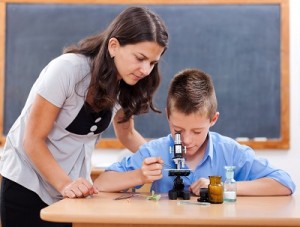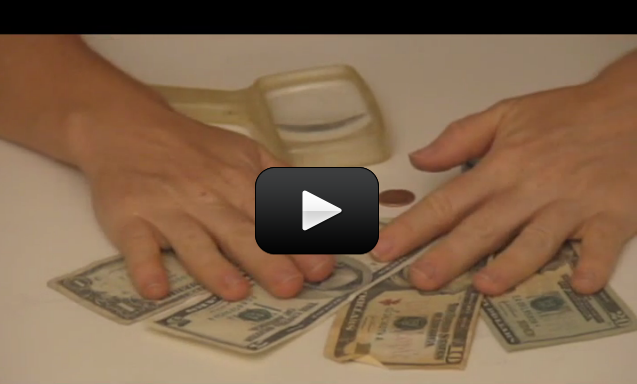 Did you know you can create a compound microscope and a refractor telescope using the same materials? It’s all in how you use them to bend the light. These two experiments cover the fundamental basics of how two double-convex lenses can be used to make objects appear larger when right up close or farther away.
Did you know you can create a compound microscope and a refractor telescope using the same materials? It’s all in how you use them to bend the light. These two experiments cover the fundamental basics of how two double-convex lenses can be used to make objects appear larger when right up close or farther away.
Things like lenses and mirrors can bend and bounce light to make interesting things, like compound microscopes and reflector telescopes. Telescopes magnify the appearance of some distant objects in the sky, including the moon and the planets. The number of stars that can be seen through telescopes is dramatically greater than can be seen by the unaided eye.
Materials
- A window
- Dollar bill
- Penny
- Two hand-held magnifying lenses
- Ruler


I couldn’t find Washington – that’s were I live
Test
Since we’re still adding content to the grade level area, we don’t yet have a shopping list for it – so sorry about that! You can skim through and look at the experiments you want to do and quickly make a list for the ones you’d like to do.
Hi Where do I find materials list for 7th grade Life Science?
It makes the image appear smaller instead of larger. Try it!
Why can’t you use concave lenses for this experiment?
I’ll have my team contact you right away!
Hi Aurora, Why do I keep seeing sorry you don’t have access… when I paid for this grade level?
I apologize for the confusion! I am still adding bonus content to this section, so we don’t yet have the shopping list ready for download, so you’ll want to go through and find the experiments you want to do (not everyone completes all the experiments in tne sections, as there is a bit of overlap so you can pick and choose the experiments that fit your time and budget.) You’re going for quality, not quantity. 🙂
The list of experiments is on the main lesson page for the grade level you select. When you click on a post (experiment), the menu changes on the right to allow you to view more experiments in the related section in case you want to go deeper into the subject.
I’m planning on starting 7th grade life science with my son in a few weeks. Up to now I haven’t been using the grade level format, but rather the “topics”. As I’m browsing through the 7th grade life science section, I can’t find the list of items needed for the experiments in the unit (I found this easily in the other section organized by topics). I see links to lots of experiments but the grade level section doesn’t seem to be set up like the “topics” section. Where would I find the list of items I need to have in order to teach the 7th grade life science unit? Also, I clicked on the first experiment of the Life Science section titled “Simple Microscope and Telescope” and the links to the right of the experiment say “Astronomy introduction”, Astronomy Reading and Experiments. Don’t understand why these Astronomy links are showing up in the unit that is supposed to be about life science. Thanks for clarifying.
Thank you, I now have access.
I’ll have my team connect with you right away!
Why do I keep seeing sorry you don’t have access… when I paid for this grade level?
It may be a problem with your account. I’ll have Tonya get right back to you!
Aurora I don’t know where to do the next experiment if I can’t unlock it the only one I can do is this one because it says I’ve not unlocked the next thing what is the next experiment after this one that I can do.
Hmm… I am not sure of your question. Ask again a different way?
Answers to exercises are in a link on the exercise page, and in the downloads on the last page.
Hey where would my mom found the answers to the exercises/questions up top and above the comment bar.
After, because it’s got details and questions about the experiment. You can print it out ahead of time so you’ll have it when you need it. 🙂
Do they do the student worksheet first or after the video?